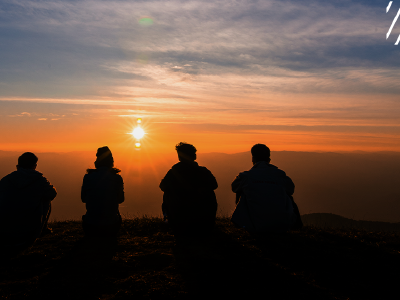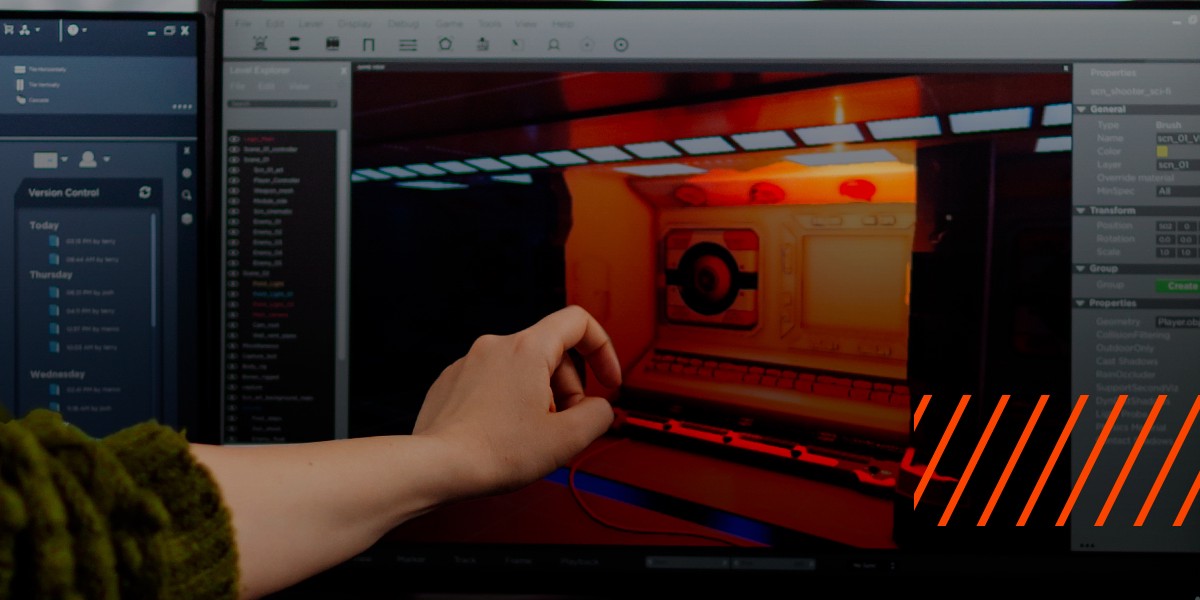
What does the future of image forensics hold?
The CameraForensics Team
26 April, 2024
With Alan Gould from CameraForensics and James Pollock from Lux Aeterna

For CameraForensics and VFX studio Lux Aeterna, pushing the boundaries of AI image diffusion techniques is vital. For Lux Aeterna, it means being able to understand how to safely exploit breakthrough AI techniques for production processes. At CameraForensics, it means being equipped with the knowledge needed to create powerful tools that help combat illicit image sharing.
Recently, we sat down with James Pollock, Creative Technologist and VFX Artist at Lux Aeterna, and Alan Gould, Operations Manager at CameraForensics, to talk more about all things AI, R&D, and how we can collaborate to break down key challenges.
Alan: Our mission is to equip investigators in the fight against illicit image sharing. Keeping up with the latest technology is essential, and Generative AI presents a significant new challenge. By understanding its capabilities and what makes it so effective, we can contribute to the global effort to mitigate its threats. We’re in a race with the bad actors who are using it to generate and alter unprecedented quantities of illicit images, and the understanding we can achieve by working with the technologists at Lux Aeterna is invaluable at keeping pace with this emerging capability.
James: What we’re getting is expertise on how to build breakthrough tools, and how to create content using the latest tools and techniques available.
A big part of the work we do as a VFX studio is keeping on top of cutting-edge tech, we’re always on the lookout for what’s emerging that we could potentially use in our production processes. Our journey with generative AI started about two years ago when we looked at early text-to-image processes. At the time, the outputs were quite crude. What you’d get back from your text prompts would look quite psychedelic and evocative but was far from a perfect representation of what you asked for.
As time went on, and the technology developed further, the quality of the outputs jumped up significantly. We started taking the tech much more seriously. That’s when we realised just how big the potential risks surrounding ethics and legality were, and we jumped into learning more about that side of things.
James: Sure! A really interesting example is that if you use a standard AI image generator, something like Midjourney, and ask it to draw “a golden android in the style of a 70’s sci-fi film”, it’ll give you an image of the Star Wars character C-3PO. That might not be what you asked for, you might not have used any language that communicated that you wanted that character, but that’s what you get.
That tool has replicated something that has existing IP and copyright around it, and if you were to use it in your production, you’d soon get Disney’s lawyers on your case. Obviously that’s an extreme example, but it highlights the issue of what these models were trained on, the ownership and ethics of all the imagery it generates, and how important a responsible approach to this tech is.
This isn’t just something that we’re concerned with, it’s also a big deal for our clients. When millions can be spent on a film or TV series, even a slight risk of being impacted by new regulations or negative PR is a concern. Our R&D work in this space helps us better understand where the tech is at right now, and where it needs to get to in order to truly be a dependable and responsible option for VFX.
Alan: When faced with a new technology one of our biggest challenges is understanding how it is being used, and then anticipating how it may develop and evolve so that we can create effective countermeasures. Lux Aeterna is experimenting with workflows to generate content, and we were able to take what they did and use it to generate large quantities of safe training material in a way that mimics the processes that harmful content creators are using. This is invaluable – for example in helping to develop classifiers that can reliably identify and analyse generated content.
What this means is that we can make sure that our detection and classification systems are effective, and that investigators have the most robust tools possible.
There must be some challenges involved in that?
Definitely. We need to generate images that are benign in terms of content, and we need a large collection of photographic-quality images that include a variety of ages and genders, contexts and races. That all helps to make sure that detection systems have a broad range of training inputs. We also have to do it in a way that we’re not generating potentially illegal material ourselves.
James: We try to approach R&D by looking at common tasks in our production processes, and thinking about what a new technology could bring to that process. The result might be a niche application, but one that’s ultimately very powerful and helpful.
Beyond our work with CameraForensics, we’re also part of MyWorld, a research programme based in Bristol and Bath. MyWorld brings together universities across both cities, as well as industry players such as ourselves, BBC and Aardman, to pursue pioneering creative technology R&D.
One of the big challenges the creative industries are facing is how to approach these powerful generative AI tools when there’s so many issues surrounding their use. Through MyWorld and our work with CameraForensics, we’ve been able to thoroughly explore generative AI responsibly outside of broadcast VFX projects.
Alan: It all depends on what your goal is. If your goal is to create commercial content, then you’re going to be a lot more concerned with issues like copyright infringement, or the potential for having illegal or personal content/information buried in the base models of the tools you’re using. There’s also a risk of accidentally generating content based on real people.
Ethical considerations are the top priority for us. We’re using tools to mimic what malevolent actors are doing so that we can build effective countermeasures. Naturally, we have to be careful to make sure that the content generated is safe, clean, and doesn’t put us at risk.
James: I agree. Understanding the ethical and legal landscape of an emerging technology is as much a crucial part of our R&D as understanding the technical and creative aspects. It’s about how confident we and our clients can feel if and when we utilise a new technology. If the confidence isn’t there, the tech isn’t mature enough.
In an emerging and evolving space where standards, regulations and best practices aren’t well established, an honest and open conversation about ethics, and an approach based on responsible innovation is key.
Alan: As the tech evolves, our skillset needs to evolve too, which is why we went looking outside our traditional domain to find the best people to work with. And thanks to Bristol’s world-class creative sector, it turned out they were right on our doorstep!
What I love is that, while we’re two very different organisations in very different markets, faced with very different challenges, we have the synergy to access each other’s skill sets. Lux Aeterna is unique in its sector as the company really values and invests in R&D. That understanding and focus on experimentation is at the core of our partnership, helping us both to keep up with evolving threats. This is the third project that we’ve worked on together, and it’s been a great journey of discovery!
James: I think another one of the reasons why we have a great relationship with CameraForensics is we’re both interested in pushing these technologies as far as they can go. A huge part of our business is making realistic, believable and convincing imagery, and our perspective gives CameraForensics an insight into the thinking and processes that go into the creation of fake images regardless of the technology at play.
Ultimately, venturing into emerging technology is only worth it if we can do it responsibly. That’s the great thing about working with CameraForensics – they’re acting in a domain where the stakes are very high, and fully appreciate the responsibility to do things the right way.
Interested in learning more? We’ve shared our insights on the latest AI news and developments on our blog. From the challenge of deepfake imagery, to how AI material is impacting our perception of online media, read more today.